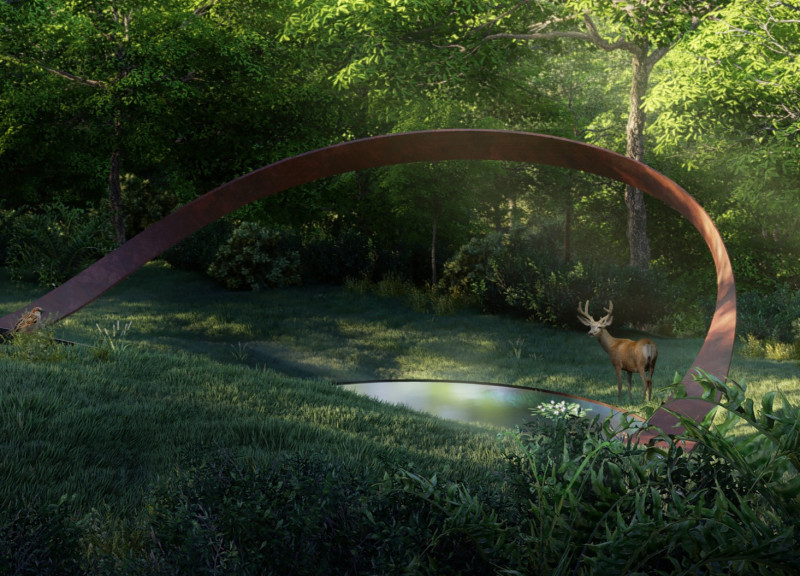5 key facts about this project
The design draws inspiration from Peter Zumthor's "Poetic Landscape," situated in a quiet forest valley. The goal is to explore the relationship between humans and nature, focusing on themes of tension and harmony. These ideas serve as guiding principles for the overall design, creating a space that invites visitors to engage deeply with their surroundings.
Sculptural Elements
A key feature of the design is a sculptural element made of two weathered steel sheets. These sheets rise from the ground and meet at a looped apex. This formation highlights verticality while representing the tension between man and nature, resembling a see-saw in balance. Acting as both an entrance and a frame for the landscape, the sculpture encourages exploration and reflection.
Meditation Cabin
Next to the sculptural feature, a meditation cabin takes on a primitive, cave-like shape. It is carefully placed to blend with the terrain, providing shelter for visitors seeking solitude. The cabin's concave interior is made from warm-hued larch wood, offering a tactile connection to the natural world. This design promotes a sense of peace and focus, enhancing the experience of introspection.
Reflective Pool
Another important element is the reflective pool, located away from the cabin to capture plenty of sunlight. Filled with black pebbles, the pool serves as an altar for fresh flowers, adding a ceremonial aspect to the site. The water's reflective surface invites visitors to pause and contemplate, enriching the atmosphere of the environment.
The project effectively combines sculptural elements, the cabin, and the reflective pool into a cohesive and thoughtful space. The choice of weathered steel for the sculpture and larch wood for the cabin emphasizes the connection between the built structure and the natural landscape. This careful integration allows visitors to feel a sense of unity and tranquility as they navigate through the environment, fostering a deeper understanding of their relationship with nature.






















































